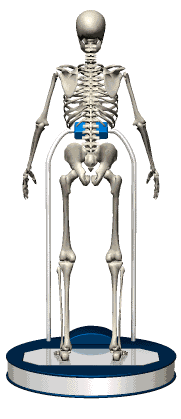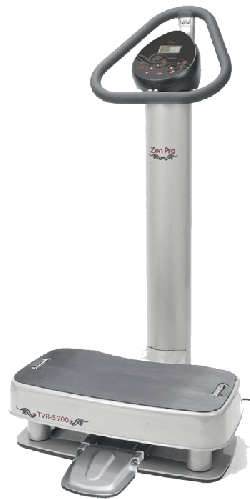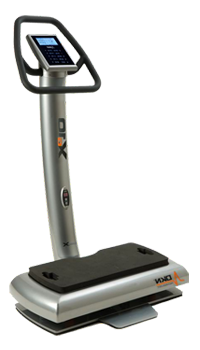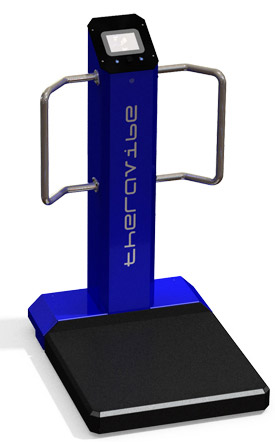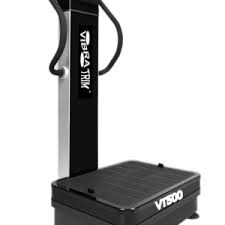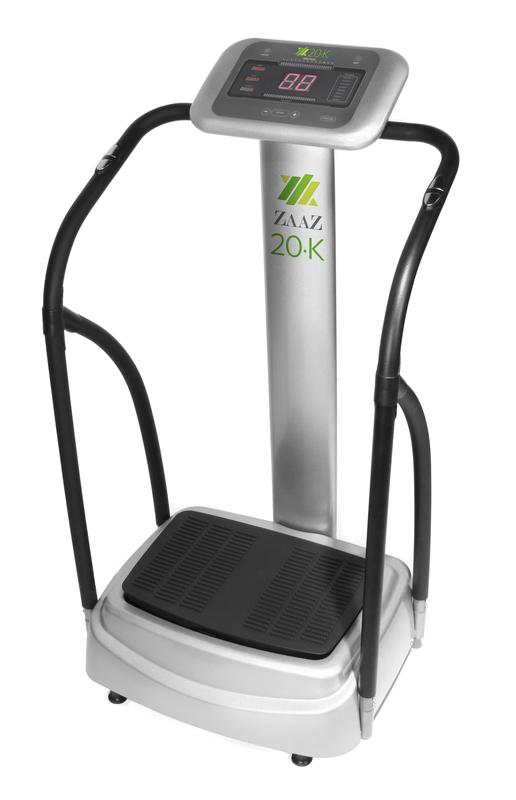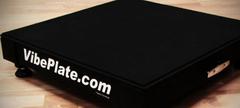This website is not hear to push certain brands but to teach people about the components and engineering on whole body vibration and the different styles of vibration. If you want to see fake star ratings on different models you won't find it here.
THIS SITE IS FOR YOU!
My awareness of the benefits of whole body vibration has led me to make this site. Â It is your decision to learn the facts about each machine and since they have been out a while, which ones are most likely to give you the results you want based on previous users, to choose the right machine for you. I hope my site can help you choose the right machine.
USE THIS SITE AS YOU WISH
I know that most people will eventually have more questions as they read, that is why I have tried to answer most of them on my site. The answers do not come from sales pitches from manufacturers. I do hear what they say and see if it matches the feedback I get from users. Hearing their sales pitches was never good enough for me as you can see on my site.
With all my research, I know what I say is true and my opinions are valid. A lot of people agree with me once they get their machine too so I know I am not on my own with this. I do not want to waste my research and others feedback just for my personal information. I want to share it after seeing if it is valid or not. If you buy a machine that is not right for you please don't contact me because you feel bad about it. I didn't write this site just to make people feel guilty. If you feel this way, you probably bought the wrong machine already. But, if you haven't bought one yet, you can at least know that you have support and a heads up on what to look for.
Most people go from not knowing anything, to listening to sales pitches from salespeople, to buying, to using it to find no results, and then complaining that it doesn't work giving the machine a bad rap because it didn't work for them. Now that the experience didn't match the claims, they return it. You really need to be careful if you want to find a machine that fits your personal needs.
There is no first best, second best, or what's the third best one. It either works or it doesn't. It is so funny how people want something that is cheap and think it will give them the amplitude or type of vibration to get them the results they are seeing others get. Only to buy and see it doesn't work. Learn the facts. Get educated on motors, the components to know how they will hold up, and how each is engineered. Just because it is linear it can be a rotary motor or a different type. Each has its own unique feel and ballistic impact rating.
Beware of fake review sites that have rating systems from someone that is probably trying to sell a certain brand. Who would rate something like this. Giving 1 star to something by someone who is a salesperson is not fair to the consumer especially if they don't go in detail about their rating other than to say something else is better. These reviews always make their model they are selling to be the best. The rating scales are usually made up and the information is usually biased and naive consumers actually believe it.
Glossary of Terms:
This section will help you get a better understanding of different words and industry jargon in the whole body vibration Industry.
Some of these terms are really not that important, but others are, so don't be tricked into buying a machine just because companies and their websites talk about or have pictures made to prove these points. The hardest part in my WBV quest was that many of these terms and ideas were repeated over and over again by different companies. So the trickier part is to find out to see who was lying about their claimed quality and technology. The rest of my site does this.
If you have a better definition for these terms, please don't email me. I don't care and you're probably from a WBV company trying to make something better to help you out. Some of these topics are covered in detail in other sections of the site. I will not comment on the validity, quality and differences here.
Whole Body Vibration Industry Terminology
Plate size: Longer plates need bigger motors. As a rule, bigger plates vibrate more smoothly than smaller sizes and you can do more exercises with more space.
Static exercise - Holding a position or pose while not moving while the machine is vibrating
Dead Spots - Points on the plate where you can step and the vibration is wack
A commercial unit - is designed as a projected income for a high end-use studio or gym. Should be serviceable for a period of 10 years+. Should have no feasible weight restrictions.
Domestic Unit
Home unit designed for personal use. Depending on type, it might or might not be used for weight loss.
G-Force This is dictated by the speed of the platform during its upward movement in the vibration. For example; when someone is put in a rocket and fired towards space – gravity is still trying to pull you back. But because you are moving in the opposite direction to gravity you become temporarily “heavy�. In Vibration Training terms this would be one indication of how hard your muscles need to work to stay in a given position. Most of the models are gauged in G force between -3 to 3 g force.
Contraindications - Reasons why certain people can't use certain machines. That is why there are different types of vibration. The models that work raise the gravitational G-force have less restrictions among users. Some are just safer than others.
Lineal - When the plate moves straight up and straight down without any other movements. Even if you stand on the edge you will still go up and down.
Pivotal - When the plate tilts side to side (one foot goes up and the other foot goes down)
Voltage - Volt usage. Generally 110 volts (120 volts), or 220 volts (240 volts) depending on brand, size, model and country.
Amperage - Amp usage. Generally 15 amps or 20 amps (rare) depending on the brand, size and model.
Power Rating Electric consumption by the machine.
EVPM Endurance - Used to state the expected "Lifespan" of the motor.
Motor Quantity Number of motors in a particular size or model.
Motor Size Size of the particular motor design.
Motor Material The material, usually describing the type of motor.
Warm Down Time The number of minutes it takes before the machine is ready for use after usage.
Frequency - Unit of length used to determine energy type: (i.e. electromagnetic spectrum), metric system. 3 to to 45 hz is optimal. Very few machines reach 60 hertz.
Low-end Output - Lowest frequency or amplitude produced by the motor powering a plate.
Median Peak or Median Output - Concentrated energy level at the top of the bell shaped curve in frequency (Wavelengths).
High-end Output - Highest frequency produced by the motor with the most resistance.
Session Time - Number of minutes of WBV usage.
Full Session - Number of minutes required to achieve desired results
Research Scientific records proving the range or effectiveness of specific machines.
Manufacturer - If the company owns and produces their own machine.
Private Labels - Sharing an existing product line with no exclusive usage of product designs and features, only a unique brand name.
Warranty What companies will cover if the product goes defective within a period of time.
Quality Control - Final inspection of finished unit before packaged and shipped for distribution or retail.
EMF- Comes from models not using a sound coil. A disturbing frequency without resonance.
Absorbed power: This is power absorbed by you or the machine, or the floor.
Injury potential: Some models are more likely to cause injury than others depending on the vibrational variance in top to bottom vibration
Vibrational Magnitude: another way of saying amplitude
Vibration Duration: How long you can use the machine without stopping it.
Wear and Tear: This is how much abuse the machine can take before breaking
Frequency Spectrums: The lowest vibration (absolute) to the highest vibration (absolute)
Wasted Friction VS Vibration Absorption: This is how how much of the energy is wasted to create vibration
Technology Patents: These stop one company from copying another's technology. The least envasive technologies are what most companies are trying to copy.
Glossary of Terms for Motors
Amperage: This is the amount of power the motor is pulling out of your wall outlet. If you have a 13 amp motor and you are pulling over 13 amps, you run the chances of the motor burning out or a huge decrease in longevity.
Wattage: This defines the amount of horsepower. 746 watts equals one horsepower.
Horsepower: An index of the amount of work a machine or motor can perform. One horsepower is equal to 746 watts. Since power is equal to torque multiplied by speed, horsepower is a measure of a motor's torque and speed capability; e.g., a 1 HP motor will produce 36 lb-in. at 1,750 rpm.
Peak Horsepower: This is the peak amount of horsepower the WBV motor can produce. The motor need more horsepower the more weight that is added to the plate.
Constant Horsepower: This is the amount of horsepower the motor produces or goes into the plate at a certain capacity. A motor that has a 3HP peak capacity will not vibrate the same as a machine with a constant 3HP capacity.
Output Horsepower: This is the amount of horsepower that goes into the plate after accounting for the friction produced and the horsepower needed for the cooling fan. The common misconception is that people think if a motor says 3HP that they are getting 3HP output horsepower.
Input Horsepower: This is the amount of horsepower the motor takes in without the plate attached. A motor that claims 3.5 HP might not be any more powerful than a 2HP motor. It might have more torque but not top vibrational frequencies.
Breakaway torque: The torque required to start a machine in motion. Almost always greater than the running torque.
Class B insulation: Class B insulation is rated to an operating (internal) temperature of 130C. The motors that don't operate over the maximum allowed amperage usually are rated Class B.
Class F insulation: Class F insulation is rated to an operating (internal) temperature of 155C
Class H insulation: Class H insulation is rated to an operating (internal) temperature of 180C.
Cogging (Cogging torque): A term used to describe non-uniform angular velocity. Cogging appears as a jerkiness, especially at low speeds. Many machines get jerky after 5 years if they are used above the maximum allowed amperage. If a motor is rated at 13 amps and you use it over that the majority of the time, don't expect it to last long and the motor to perform optimally.
Continuous rated current: The maximum allowable continuous current a motor can handle without exceeding the motor temperature limits. Please read about peak vs constant HP.
Continuous rated torque: The maximum allowable continuous torque a motor can handle without exceeding the motor temperature limits.
Continuous stall torque (TCS) (lb-in.): The amount of torque at zero speed, which a motor can continuously deliver without exceeding its thermal rating. By locking the rotor, we can find how many pounds of force the plate can exert.
Demag current: The current level at which the motor magnets will start to be demagnetized. This is an irreversible effect, which will alter the motor characteristics and degrade performance. Also known as peak current. By operating your WBV machine over the allowed amperage you will notice a decrease in performance. If you plan on using more amps than the maximum allowance of a lower powered machine, I recommend getting a model that uses enough amps to avoid this problem. Take our quiz and we can help pick out a model for you that won't go over the maximum allowed amperage and not overkill.
Efficiency: The ratio of power output to power input. There are certain models that have 3.5 HP with 13 amps and others with 3 HP with 13 amps. One misrepresents its output horsepower right on the box. This is what mislead me on one of my first two machines I bought.
Ferrite: A type of permanent magnet consisting of ceramic compounds made up of oxides of iron, barium and strontium. WBV motors that have better magnets costs more than other models. I have seen WBV motors that are 1/2 the size and weight as a bigger motor and it its more powerful. It is not all about the size of the motor always. It's about the type of magnets. The best motors have magnets that don't degrade. Some very powerful motors have magnets that degrade shortly after the warranty period. You have to balance the power of the motor to its longevity and know what you want.
Friction: A resistance to motion caused by contact with a surface. Friction can be constant with varying speed (Coulomb friction) or proportional to speed (viscous friction).
HP = Volts x Amps x Efficiency/746
Mid-range instability: A phenomenon in which a motor can fall out of synchronism due to a loss of torque at mid-range speeds. The torque loss is due to the interaction of the motor's electrical characteristics and the driver's electronics. Some drivers have circuitry to eliminate or reduce the effects of mid-range instability. This is a common problem on some WBV machines.
Overload capacity: The ability of a drive to withstand currents above its continuous rating. It is defined by NEMA as 150% of the rated full-load current for "standard industrial DC motors" for one minute. The lower amperage WBV machines have an automatic shutoff so that the motor stops operating if you run it long enough at overload capacity.
Peak torque (lb-in.): The maximum torque a brushless motor can deliver for short periods of time. Operating motors above the maximum torque value can cause demagnetization of the rare-earth magnets. This is an irreversible effect that will alter the motor characteristics and degrade performance. This is also known as peak current.
Rotor: The moving part of the motor, consisting of the shaft and magnets.
Thermal resistance (Rth) (C/watt): An indication of how effectively a unit rids itself of heat; a measure of temperature rise per watts lost. A good built in fan is good but it can take power away from the plate. A commercial grade machine is best if you want to efficiently rid heat. If you think you are putting 3 horsepower into the plate, think again, put your hand behind the motor and feel how much heat comes out. It takes around a horsepower just to power that fan so the motor doesn't overheat. If you want to make sure you are getting a 3 HP vibration, make sure the input power is 3HP, not just the output power.
Torque-to-inertia ratio: Defined as the motor's holding torque divided by the inertia of its rotor. The higher the ratio, the higher a motor's maximum acceleration capability will be. On very powerful machines, when you turn it on, its like boooooom, the plate has already accelerated at max speed. Cheaper machines can reach that max speed but just slower. It's like a Ferrari and a Honda can both reach 60 MPH, but which can do it faster.
If you have any questions about anything on this page feel free to call me. I do not give sales pitches or hype any brand up. I discuss the principles and components and engineering. I don't use buzz words that I always hear. Just because WBV machines work doesn't mean someone has a right to use examples on the extremes of a bell shaped curve and giving far fetched testimonials that maybe only worked for one person.
I do sell these machines but you will not feel like you are talking to a salesperson, because we ARE NOT salespeople. We serve these machines. We don't stock them. The manufacturers ship them for us. We get special prices because we move a lot of their machines. I have done my research and studied these and did the work of spending over a year talking to people every day to find out what works and what doesn't for different needs. This is why you won't hear us saying that pivotal is better or linear is better.
Please, as the first contact to our site, take our quiz. It saves you time and helps get a more accurate recommendation.
If you have questions and want to talk about whole body vibration, make contact. 1-866-945-9072.
Test your Vibration I.Q.
- PowerVibe - VMaxFitness - DKN - Turbo Sonic - VIBEPLATE - TheraVibe - HyperGravity - VibraTrim - FitVibe - WAVE - HYPERVIBE - ZAAZ - VIVOVIBE
LymphaticVibration.com
We're Open Now
1-888-439-8986
Ask for Sharon
1-888-439-8986
We're Open Now
Ask for Jake


